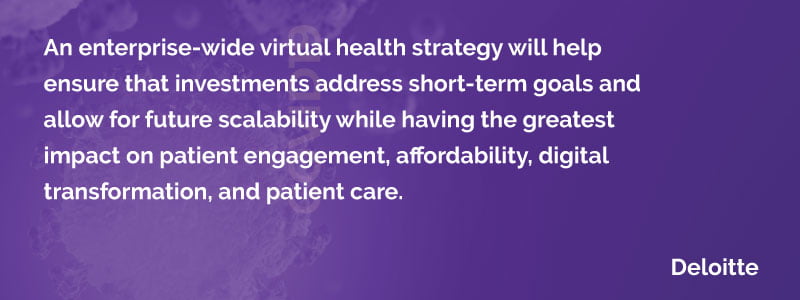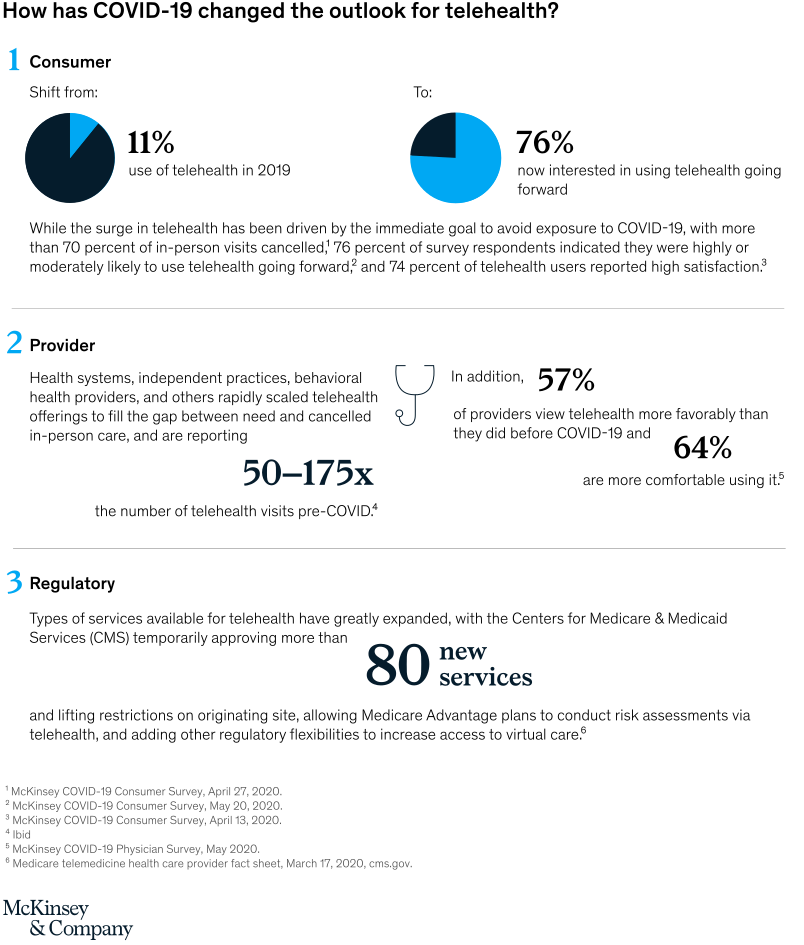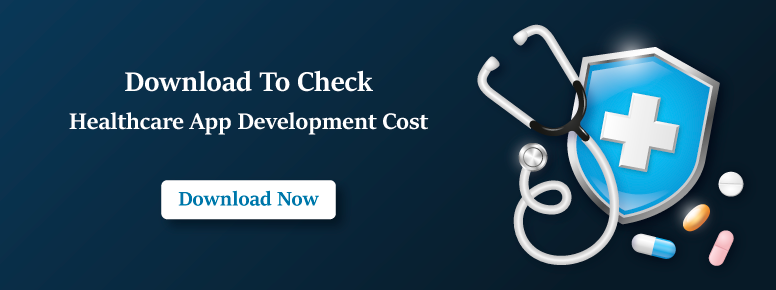Across the world, Health Technology providers are facing unprecedented stress (both individually and institutionally) while tackling the humanitarian tragedy of Covid-19 pandemic. The crisis seeks immediate response from the healthcare infrastructure, causing rapid shifts in how and where the care will be provided.
Healthcare experts have started revisiting the already established norms and best operational practices. The findings and new initiatives are helping healthcare providers manage to help both Covid patients and patients who need regular medical care and consultation.
The executives and leaders of healthcare service providing organizations are trying to manage the unprecedented level of demand for medical service in their hospitals. They are struggling with optimizing the care for such a heavy demand. In the last few months, the healthcare industry has experienced the potential for a fundamental shift in the operations other than the continuum technological advancement. These changes have been seen in areas like health care worker’s training, inventory sourcing and management for critical medical equipment and PPE materials, design and construction of facilities, and optimizing the facilities for the best possible medical services delivery. Some of these transformations were underway for a decade, the pandemic will possibly accelerate this.

As a matter of fact, Deloitte states that “care model innovation” is among the major trends that will drive health technology investments in the healthcare sector,. But the question is will our collective experience amid the Covid pandemic be sufficient to drive the distributed and virtual healthcare system to a noteworthy percentage change in overall healthcare delivery?
Throughout the 20th century, the healthcare industry has seen groundbreaking technological advancements in healthcare and now the industry is matured enough to pave the way for the next big transformation. Areas where healthcare facilities such as primary care doctors were available, people used walk-in clinics for minor aids. In many countries, healthcare access has increased due to investments in public health infrastructure and healthcare inclusion initiatives. In the present time, all these transformations are considered as the traditional method of care provision. Now, this traditional infrastructure will change too.
The New Healthcare Infrastructure
Existing care model is very different from the traditional model, used decades ago. The rise of outpatient surgical procedures and the success in health improvement with home monitoring and physical therapy have eliminated the need for long hospital stays. In the post-Covid-19 era, the success of Health Tech providers will depend on how they deal with the set of new challenges whilst capturing new market opportunities at the instant.
Mckinsey identified that the healthcare infrastructure will witness three key shifts across the care delivery value chain. These changes are applicable in Africa, Asia, and the Middle East market. The changes are:
- The next normal world will witness new paradigms for the healthcare infrastructure, majorly affecting the geographic distribution of service providers and care settings.
- Operational excellence will be a crucial factor.
- External factors such as new growth opportunities and need for diversification will emerge.
As the healthcare sector moves forward with more advanced approaches to care, this will result in new infrastructure and new service requirements. The new infrastructure requirement opens the door for new market entrants that can have a prevalent impact on the healthcare ecosystem. The changes include:
Tele-Medicine will save lives
For many years, the practice of accessing a triage nurse via the phone has been very common. But people have been reluctant to use tele-medicine care for several reasons such as security concerns, technical hurdles, or the lack of availability. With an increase in communication bandwidth, basic virtual care infrastructure, and the social distancing requirement amid this pandemic, this practice will get more structured. Both the patients and clinicians are now widely open to undertaking virtual face-to-face calls.
In many areas, virtual care via video calls is also in trend to eliminate the need for patients to travel long distances to seek help from health professionals. These programs will possibly get expanded over time as they are convenient for doctors as well as patients.
One of the first companies that developed devices that would make the tele-medicine process effective was Tytocare. The company builds devices for patient use so that the patients can measure vital health signs using the device. These real-time signs help doctors to consult the patients during the consultation call.
Wearable devices are also making it easier for doctors to consult patients remotely. Using wearable health-tracking devices, patients have started monitoring their Health Technology status on a regular basis. Wearables have the potential to gather and save health information which is then used by doctors to provide better consultation.

Retail Health-Care Centers will be the New Shopping Store
We’re witnessing the customer’s move from physical retail to online shopping. As this shift is processing and the shopping center or mall infrastructure is getting vacant, there comes an opportunity for healthcare providers to transform these vacant spaces into medical care facilities. These re-imagined care centers can possibly be used for outpatient surgery, minor injuries treatment, primary care, and diagnosis and imaging purposes.
The shopping centers and malls are the perfect places for primary healthcare facilities and outpatient care services as they can handle large crowds and are situated in the areas where transportation and convenience infrastructure and parking spaces already exist.
An example is the biggest mall of America in Minneapolis which have announced in mid-2019 to open 2300 square feet walk-in clinic which will have medical exam rooms, lab space, a radiology room, and a pharmacy dispensary. The mall is said to be teaming up with the University of Minnesota to operate the clinic.
Another example is Amazon which is collaborating with Berkshire Hathway and JPMorgan Chase to provide better and low-cost healthcare services to their employees. Amazon has also widened its product line for its consumers by introducing pharmacy services and is encouraging delivery by drones to prevent unnecessary social engagement.
Data will be the New Ventilator
It’s been more than a decade since the healthcare industry has been seeing how data can help save people lives. The CIO at Barcelona Hospital Clinic, David Vidal recited the words of his co-worker, an infectious disease specialist, when he said, “We are saving lives, thanks to data”.
Since a huge number of patients are required to be hospitalized, many hotels and sports pavilions are being converted into care facilities across the world. Healthcare technology service providers are working tirelessly to make sure that the electronic health records (EHR) are available at every stage of care. In addition to this, many health technology service providers are establishing teams of Health Technology developers to create new systems to classify Covid-19 patients. This helps doctors and other medical staff in their decision-making process, as stated by Jesús Redrado (CIO at a prestigious hospital in the Navara region, Clínica Universidad de Navarra).
The Covid-19 crisis has triggered a never seen collaboration between the public and private care centres. Private hospitals are helping the public healthcare system by allowing the transfer of patients to them, as the public hospitals are witnessing challenges in coping with the huge number of cases. David Vidal stated that this collaboration has highlighted the need for better interoperability between private and public care systems. But with the technological advancement in the healthcare space, this problem will soon be fixed.
In Madrid, the city most affected by the pandemic, the hospitals have invested heavily to build systems that can empower them to help people during this pandemic. The CIO at Hospital 12 de Octubre, a renowned university hospital in Madrid, Juan Luis Cruz said, “We’ve realized that data is fundamental for saving lives. We’ve consulted our healthcare technology solution providers to build systems that can compare clinical data for the doctors. Moreover, the system is now capable of alerting the doctors of many health parameters. Data is being very helpful in classifying patients, plan resources accordingly, and make better decisions”.
It is evident that Madrid hospitals management models were the best during this crisis. Many other healthcare centers have learned from them to get organized using data-driven healthcare management systems. Almost all the CIOs agree that the Healthcare Information Management System Society (HIMSS) has been very useful in these odd times.
Deploying Technology at Scale
The changes Covid-19 have brought are very unlikely to be temporary. The post-Covid-19 world for healthcare space will be very different from what was seen previously. However, there are some attributes that every new healthcare solution entrant will have to follow in order to stand out.
Obviously, every new solution would be required to be tangible and capable of solving specific challenges in healthcare infrastructure. The Health Technology solutions will be required to be accurate, safe and reliable in order to be deployed at a large scale. The following are five other aspects that are less obvious, but are very crucial for deployment:
- It is easy to get allured by technological advancements and deploy them. Getting desired outcomes is not possible without spending an ample amount of time in analysing and ensuring that the particular solution fits within your clinical workflow and that the workforce hierarchy is managed around the project deployment in the same manner as the other organizational aspects. The solution is required to fit within the medical institution’s governance structure so that it gives clarity about who is responsible for executing or monitoring important actions.
- The solutions should be personalized for every use case. In order to use technologies such as machine learning and artificial intelligence, the system has to incorporate relevant data from the past. Personalization of healthcare management solutions means the data should be the organization’s existing data so that the outcome is more precise and relevant to the institution.
- The technology solutions that will be successful are the ones that are backed into EMRs and also focus on assisting clinical decision making. They need to be built keeping clinical workflows in consideration.
- As always, data security will be the foremost priority. The solutions will be required to meet the healthcare compliances including HIPAA and PHI.
- As discussed previously in the article, there will be a huge requirement for interoperability among healthcare technology solutions. The solutions should have open APIs, unless the technology service provider can integrate them with the existing EMR system effortlessly.
 The new doors for healthcare technology will play a significant role in optimizing healthcare costs and improving the patient’s satisfaction and cure quality. Many market forces were already driving the digital transformation for the healthcare industry, but the Covid-19 pandemic has escalated the shift. The utilization of data and AI will come out to be a game-changer for the healthcare industry.
The new doors for healthcare technology will play a significant role in optimizing healthcare costs and improving the patient’s satisfaction and cure quality. Many market forces were already driving the digital transformation for the healthcare industry, but the Covid-19 pandemic has escalated the shift. The utilization of data and AI will come out to be a game-changer for the healthcare industry.

Niketan Sharma is the CTO of Nimble AppGenie, a prominent website and mobile app development company in the USA that is delivering excellence with a commitment to boosting business growth & maximizing customer satisfaction. He is a highly motivated individual who helps SMEs and startups grow in this dynamic market with the latest technology and innovation.
Table of Contents













No Comments